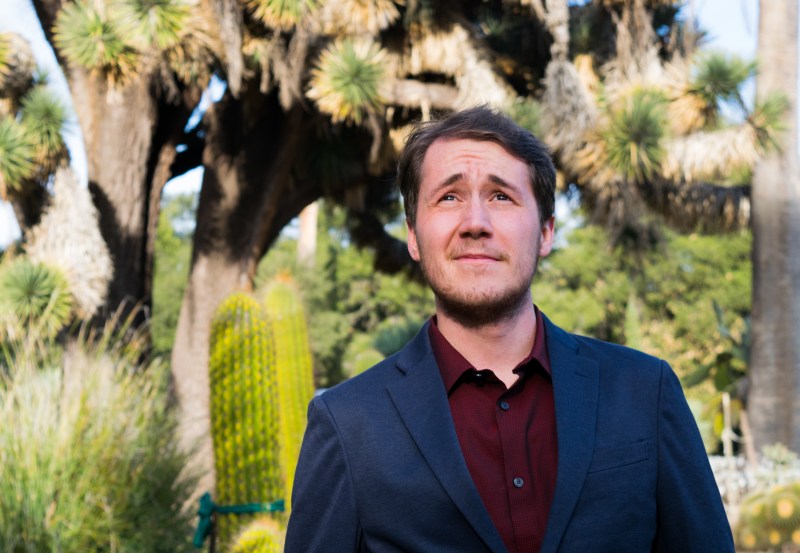Driving up to my house for winter break — the first time I’d been home since September — I felt that same feeling I’d get after coming home from a family vacation: Well, that was fun. Back to real life now.
Except this was different: Stanford was real life. My house, the yellow walls and the olive trees that stained the sidewalk, the canopy bed and the books lining my desk: That was the vacation now. Fall quarter had been a whirlwind, a summer camp on intellectual steroids. But it had also been a time of learning, of familiarizing, of turning Stanford from a palatial dreamland into a reality.
Stanford had become more than the pictures of the Main Quad church at night, the hundreds of advertised clubs and groups, the professors who were often invited to speak on NPR. Stanford still is those things, but it’s also the little, real things: the basement laundry room, the weekend walk to Trader Joe’s, the dining hall hours, the weekly reflections for an introsem.
Back at my house for winter break, I realized how much my perspective of Stanford had changed. Two years before, it had been a five-percent-acceptance-rate school for which I’d never make the cut. One year before, it had been the honeymoon phase of my acceptance letter and all the incredible but overwhelming daydreams that came with it. Now, it was my life, only partially lining up with my clueless preconceptions.
Reflecting on the past quarter, I wondered how my expectations of Stanford had differed from those of my peers and how those differences had shaped our transitions from Stanford-as-daydream to Stanford-as-reality. It was in this spirit that I conducted the following interviews with students from each class, trying to understand how Stanford has evolved in their minds since their admittance — and how they have evolved, too.
Angie Lee ’21
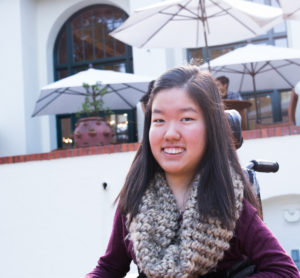
I can’t pinpoint a moment when I found out what Stanford was. To the extent of how much of a serious dream school it was, I saw it in “High School Musical 3,” and I saw that Gabriella goes here, and I love “High School Musical,” so I was like “hey, that’s a cool school.” But then I came here for a summer camp the summer before sophomore year for a screenwriting class, and I loved everything: the campus, the energy, the whole vibe. I hate to admit that I had a dream school because I feel like that’s really petty, but it was my dream ever since then.
Of course, I didn’t think I was going to get in. I remember on the day I came home from school and the results were going to come out at 5 p.m., so I watched “Harry Potter” until 5:01. Then I saw the results, and I freaked out, and my parents and I were crying.
I have a disability called Spinal Muscular Atrophy, which puts me in an electric wheelchair. For this reason, I live with caregivers on campus. My parents also moved out to Hayward, California from Chicago so they could be close in case of an emergency or if a caregiver couldn’t come. It was interesting because I left my home in Naperville, a suburb of Chicago where I lived for 16 years, yet I have a new home in Hayward where my parents moved and also a home here in my dorm, West Lag. So I think the hardest part of the transition for me was deciding where home is, and I’m still struggling with that. Is it here at Stanford, or in Hayward, or back in Naperville?
There was also a culture shock in terms of the kinds of conversations here. It’s not that the people back in my high school didn’t have any intellectual vitality, but it was a huge public high school, and not everyone cared as much about academics or things in the world that I’m passionate about. It’s been really cool to be thrown into an environment where everyone cares and wants to learn and have deep conversations. So that also shocked me, but in a good way.
Fall quarter was kind of a whirlwind of meeting people and adjusting to the classes. But now in winter quarter, the whirlwind is gone, and I’m getting used to life at Stanford, which sometimes makes me catch myself being less thankful to be here. Like, school is school — I don’t want to be doing my homework. I catch myself being less thankful than I was fall quarter. Then I take a minute to think about it, and I’m thankful again.
Cristina Brentley ’20
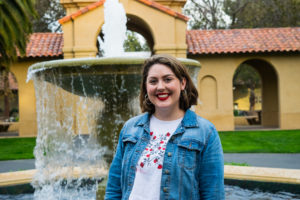
Growing up, I never knew about “good schools.” I’m from a predominantly low-income and Hispanic community, and the only “good school” you knew of was Harvard. In middle school, I remember my principal being like, “If you get into Harvard, then you can go to college for free.” So going to Harvard — that was the dream. That’s where I was going to go.
For me, though, I’ve always been a part of a relatively small community, and I’m really used to being a part of something collaborative and something open to discussion. I think when I visited Stanford during Admit Weekend, I felt a much bigger presence of the Latino community than at other schools and more of an open area to discuss and meet people. I thought it was really interdisciplinary, like the HumBio major, which is what I’m majoring in now.
For me, moving away from home was really hard. I grew up and lived my whole life in a town that’s super unique, being a border town. In my entire schooling experience, all of my teachers and classmates were Hispanic, and I was used to constantly being surrounded by the culture, the food, always hearing Spanish. I think that was the biggest adjustment for me, as was leaving my family.
For me, being in The Leland Scholars Program (LSP) was one of the greatest parts of the transition. A lot of people had similar experiences and worries, and a lot of my closest friends now came from LSP. But the classes were still a big adjustment. In high school, I often had the same teachers over and over again, so I really knew them. At Stanford it’s harder to get in contact because of the big lectures, and even if you do meet them and talk to them, they’re not the one who’s in charge of your grade.
I was really excited before coming here to be somewhere where people were going to be passionate about school because I was always the odd one out in high school. I was into really random intellectual, niche things that the average high schooler doesn’t really know about, like public health. I was excited to be able to learn exactly the stuff I wanted to learn, and I knew there were people doing research here that I’d be really interested in. I think getting onto campus freshman year, I was surprised at how quickly I was able to find opportunities to do things. Freshman year, I worked at a research lab, and I think that was one of the best experiences I’ve had.
There’s always something happening at Stanford, and life moves really fast. But I think that I’ve found and surrounded myself with the people that make me remember all the little things.
Sean Volavong ’19
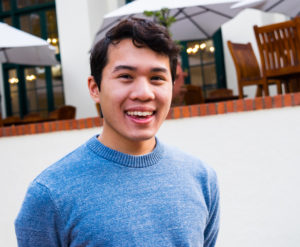
I grew up in a low-income household in Arkansas, where not a lot of people know how to get out of the state to go to other places. Growing up, I was coined as the kid who was going to get out of Arkansas — it was actually my superlative in the yearbook. In high school, I stumbled upon this program called Questbridge which connects high-achieving, low-income students with scholarships to places like Stanford. Questbridge is a ranking system, so I ranked about seven colleges, even though I never had the opportunity to visit for financial reasons. I just looked on Google Maps and was like, “ooh, cool campus!” and I would think I would want to go there.
I actually ranked Pomona College first. I wanted to go to a school like my high school where I kind of dominated the social scene, and I was really close with my professors, and so I ranked all these liberal arts colleges first. Then, in the final round, Questbridge gave you the choice to change your rankings. It’s a really bad thing, but being low-income, my parents’ expectations were a key priority, and I really wanted to make them proud. I didn’t know if my parents would be innately happy if I went to a place like Pomona, so at the last minute, I changed all my rankings. A few weeks later, I got a little email, and I knew I was going to Stanford. It was exciting. Stanford wasn’t my first choice, I’ll admit, but the fact that I got in persuaded me enough to highly consider this place.
When I came to college, I had a lot of expectations. Although I knew I was the one to get out and wanted the world to revolve around me, my family stressed to me to be very humble about my backgrounds. I came to college to have fun, sure, but also worked to keep my southern hospitality and my roots with me, and to remember my home back in Arkansas and to have a mission. A lot of people here are persuaded by the grandeur that is Silicon Valley and making a lot of money, which is true, but it’s not necessarily my cup of tea to do so. Which is ironic, given that I’m low-income and definitely want to make a lot of money, but the current pathway that I’m on — work in urban planning or city management back in Arkansas— is not going to make me very much money.
I think the problem with Stanford is that it can be toxic for your life’s mission. So I tell new students: You don’t have to pursue something to validate your own background or identity. You don’t have to take three years of French to validate that you can speak French. You don’t have to take a certain course load to validate that you can handle it. So stay true to your passions, and don’t become intoxicated and unfocused by all of the other opportunities here at Stanford.
Emily Koufakis ’18
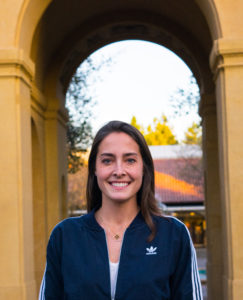
My dad had always been a really big fan of Stanford, although he went to school in Queens. He had always dreamed of going to Stanford, but he didn’t grow up very privileged, so he didn’t think he could afford a private education. Growing up, my dad would always put on the Stanford sports games, and I kind of inevitably became enthralled by Stanford through my dad, even though he didn’t even go there.
When I was becoming extremely competitive in sports, specifically lacrosse and field hockey, that’s when I learned more about Stanford, and it was actually the first school I visited. The first time I walked on campus, that’s when I knew I was definitely going to apply here.
The transition was not easy. I had always been very competitive in sports and balancing a rigorous schedule, as most students here do before they get to Stanford, but the expectations were still extremely high. Stanford recruits arguably the most competitive lacrosse players and students, and you have to have that ability to balance your sport with your academics. We would wake up before class to lift in the morning and practice another four hours in the afternoon. When I was exposed to the Olympic-style lifting, I really struggled because my body had never been exposed to that kind of conditioning before. Overall, the expectations were very high, but Stanford also made them transparent from the beginning, which I appreciated a lot.
Trying to find an outlet from the team was also hard, since it’s 20-plus hours a week year-round, and I was really craving a break from the sports side of it. I wanted to be involved in a bunch of activities by the time I graduated Stanford and really put academics first. Having played lacrosse my entire life, I was honestly drained in a way, and I felt like I was really defined by the sport and nothing else. I was always “Emily the Athlete,” and I realized after my freshman year that I really wanted to do something else for the first time in my life, and I was lucky enough that Stanford was the place to do it.
I don’t like to say I quit the sport because I’m still a coach for a girls’ lacrosse travel team in Palo Alto. Lacrosse gave me so much in my life — I knew I was coming to Stanford by the time I was a sophomore in high school, which is crazy — so I’m still connected to the sport. Leaving Stanford lacrosse was by far the hardest decision of my life, but it really made me grow up. After quitting lacrosse, it was an entirely different world. I was like: What do I do first with all this free time? And it’s funny that I say that because now I feel like I have the same amount of free time as when I played lacrosse, I’ve just found other ways to occupy that time, but I feel just as busy.
Francisco Lopez ’18
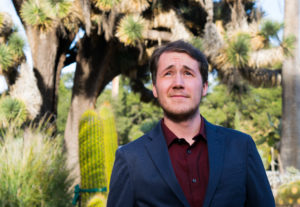
I was a Questbridge pre-scholar, which meant I got to be in a Facebook group for low-income students that had a massive amount of resources about a bunch of schools. In that Facebook group, Stanford was talked about a lot, and after doing my own research, I realized I wanted to apply there restrictive early action. I’d never been to California; I had no idea. I’d only seen the pictures of Stanford when I first applied, but what I saw about the resources they have here was such a massive gap from what I had in high school. So massive that I could do anything here.
Now I think back to freshman year, and I realize I made many mistakes. Honestly, I thought Stanford was going to solve all my problems. Not that I had problems, but I thought Stanford was going to solve everything for me, all of my worries, and everything was going to be figured out completely from being here. But that’s not true. Over time, my freshman year became harder and harder. Cutting off my family was not healthy for me, and having this perspective that Stanford was the solution to everything was also unhealthy. I realized that, yes, I had a lot of resources, but it was very much up to me to realize how to utilize them to the fullest extent. It’s not paradise — that’s what I realized. You make the most out of it.
I became a lot more focused on my studies in sophomore year. I came here with such anxiety about not having a family or community, so that was my priority. I cared about my studies, but there was definitely a gap there. So I found a balance sophomore and junior year, picking what I liked and not doing everything at once. I also got a lot closer with my family the summer after my freshman year. We talked about what that year had been like for everybody and what the expectations were now that I’d experienced Stanford that year.
If I could say one thing to my freshman self, I would have said to myself to ask for more help, in every sense: emotional stability, mental stability, homework, especially going to office hours. Now I live there sometimes, and it’s great. I almost never went my freshman year because I had that anxiety, of course, that I wasn’t good enough. I realized that it’s hard here, and the homework is meant so that you go and ask for help. The resources are here, but it’s up to you to go and use them.
This interview has been lightly edited for clarity.
Contact Avery Rogers at averyr ‘at’ stanford.edu.
